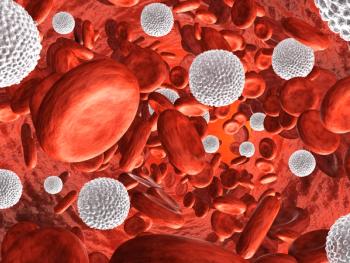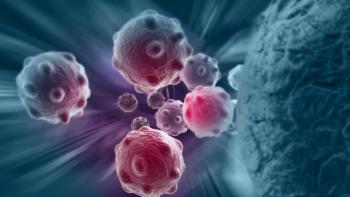
Systemic Therapy Plus Surgery Yields Survival Benefit in Stage IV Breast Cancer
Patients with stage IV breast cancer who received a systemic therapy plus surgery experienced a higher survival benefit than those receiving systemic treatment alone.
Treatment with surgery and systemic therapy resulted in a promising survival benefit for patients with stage IV breast cancer whose hormone receptor and HER2 status were known, and could be considered following neoadjuvant chemotherapy in estrogen receptor–positive, progesterone receptor–positive, or HER2-positive disease.
Findings from a retrospective study indicated that patients who received systemic therapy plus surgery (HR, 0.723; 95% CI, 0.671-0.779) or systemic therapy, surgery, and radiation (HR, 0.640; 95% CI, 0.591-0.694; P <.0001) experienced a survival advantage compared with systemic therapy alone. Patients who were HER2 positive trended towards having a higher 5-year overall survival (OS) rate if they received the trimodality regimen (48%) or a systemic therapy plus surgery (41%), compared with systemic therapy alone (29%; P <.0001).
The study identified 12,838 women with stage IV breast cancer through the National Cancer Database who had lived longer than 6 months following diagnosis and had received systemic therapy. Of these patients, 2906 received systemic therapy plus radiation, 1689 received systemic therapy plus surgery, and 1594 received the trimodality regimen.
A notable number of patients treated at an academic center received systemic therapy (53.9%) and systemic therapy plus radiation (52.9%). Additionally, the majority of patients who were treated at comprehensive community cancer programs were most likely to undergo treatment with systemic therapy plus surgery (45.9%) or the trimodality regimen (46.6%).
Among patients with high-grade histology, 56.8% were treated with systemic therapy plus surgery and 52.2% were given the trimodality regimen. The majority of patients who received surgical intervention had an R0 resection, including those treated with a systemic therapy plus surgery (77%) and the trimodality regimen (79.7%). Surgical interventions were most notable among patients with, including those treated with a systemic therapy plus surgery (70.7% ) or the trimodality regimen (74.9%).
Investigators noted that patients who received a surgical intervention, such as the trimodality regimen (38%) or systemic therapy plus surgery (32%) had a higher 5-year OS rate compared with those who received systemic therapy (21%), or systemic therapy plus radiation (19%; P <.0001).
A subgroup of 3283 patients who had underwent surgery, were analyzed in order to the relationship of survival and sequence of chemotherapy in relation to surgical intervention, with consideration to hormone receptor and HER2 status. Among patients with HER2-positive disease, treatment with neoadjuvant chemotherapy (55%) was associated with a higher 5-year OS than adjuvant chemotherapy versus HER2-positive patients treated with adjuvant chemotherapy (35%), as well as HER2-negative patients treated with neoadjuvant chemotherapy (34%) or HER2-negative patients treated with neoadjuvant chemotherapy (30%; P <.0001).
The 5-year OS was higher among patients who were ER-positive treated with neoadjuvant chemotherapy (42%) compared with patients who were ER-positive and treated with adjuvant chemotherapy (30%), patients in the ER-negative neoadjuvant chemotherapy group (30%), or the ER-negative adjuvant chemotherapy group (22%; P <.0001).
Moreover, with regard to PR status, investigators reported that the 5-year OS was 45% in patients who were PR-positive and were treated with neoadjuvant chemotherapy compared with 32% in the PR-positive adjuvant chemotherapy group, 32% in the PR-negative adjuvant chemotherapy group, or 25% in the PR-negative adjuvant chemotherapy group (P<.0001).
The multivariate analysis identified several factors that were associated with poor OS, including African American race, age of over 65 years at the time of diagnosis, treatment at a community cancer center, and multiple comorbidities. Factors associated with improved OS included those who were White, Hispanic, or Asian Pacific Islander ethnicity, as well as diagnosis at an age younger than 55 years.
Reference
Stahl K, Wong W, Dodge D, et al. Benefits of surgical treatment of stage IV breast cancer for patients with known hormone receptor and HER2 status. Ann Surg Oncol. 2021;28(5):2646-2658. doi:10.1245/s10434-020-09244-5
Newsletter
Stay up to date on recent advances in the multidisciplinary approach to cancer.

















































































